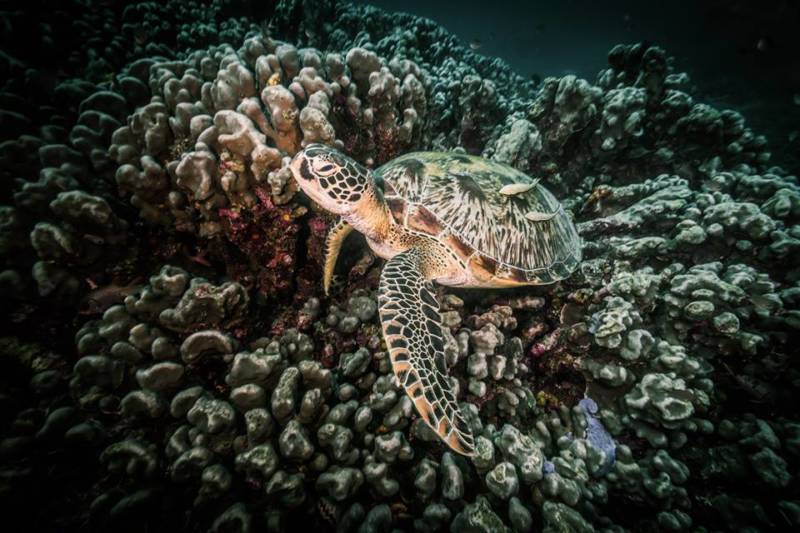Love sea turtles? So do we!
There are seven species of sea turtle in the world, 4 of which found in Raja Ampat. Hawksbill and Green turtles are amongst the most commonly sighted during dives and snorkels, with Olive Ridley sighted occasionally, and in the furthermost outreaches – there are leatherback nesting beaches. Here some fast facts about one of our favourite flippered friends!

They’ve been around for a very, very long time.
Sea turtles have been on Earth for more then 100 million years (WWF), making them some of the oldest animals on the planet on Earth – they been here both before AND after the dinosaurs!
They live to be really old!
To document the age of any species of sea turtle is actually very hard… but what we do know is that sea turtles can live up a long time, to 50 years or even more – a similar lifespan to humans (WWF). Most sea turtles take 2-3 decades to be sexually mature, and then remain reproductive for only around another 10years. So there’s only a relatively short period of time where little turtles can be made… one of the (many) reasons sea turtle conservation is challenge.

Sea turtle eggs look alot like table tennis balls…
But they’re not for playing table tennis with – or playing with at all for that matter! Sea Turtle eggs are under enough threat as it is from predators, poachers, and suitable hatching beaches disappearing due to development and erosion.
Female sea turtles can lay up to 150 eggs every 2-3 years (nwf.org), and a couple of months after that, tiny turtles emerge from the sand.
Boys or Girls? It depends…
The gender of a turtle hatchling depends on the temperature of the surrounding environment during incubation. Warmer temperatures tend to produce more females, and cooler temperatures result in males.

Survival of the fittest..
When you are only a few centimetres long, and a bit wobbly on your flippers.. life can be tough. It’s estimated that just one hatchling in a thousand (fws.gov) will make it to adulthood! On land, crabs, birds, humans, invasive species like dogs or pigs, even humans – threaten your survival. And then once a little hatchling makes it to the open sea… you look like a snack to so many things!
Yet those that make it… love to travel
The greatest traveller is the leatherback sea turtle – who can travel over 10,000 miles every year.

But the females also love to call in at ‘home’
When it’s time to lay their eggs, female sea turtles return to the same nesting beach where they were born.. this makes protecting these beaches critically important in the sea turtle conservation.
And the males spend their entire lives at sea! Since they don’t have to return to land to lay eggs, males spend most of their life in the sea. This makes it very difficult to keep track of the male population.

Sea Turtles can hold their breath for a really (really really) long time.
Sea turtles are air breathing reptiles, so they need to return to the surface to breath. But they can hold their breath for several hours, depending on the level of activity. A resting or sleeping turtle can remain underwater for between 4-7 hours! (conserveturtles.org)
They can grow to be BIG and HEAVY!
Some are much bigger than others.. the biggest of them all is the leatherback, which can weigh up to 900kg, and be 2m long!

They are absolutely amazing and adorable… but they are in trouble, and it is OUR fault.
Six out of the seven species of sea turtles are considered either threatened or endangered. Humans pose the biggest to the survival of this amazing species. From habitat loss and pollution, to the consumption of eggs and meat, to boat strike and entanglement… anthropogenic pressures are driving these incredible species to the brink of extinction – or even one day over the edge! Sea turtles are part of two ecosystems; the coastal system and the marine system. If they were to become extinct, both of these ecosystems would be negatively affected. And given that we humans use the marine ecosystem as a vast resource for food, and we use the coastal ecosystem for a wide range of activities (business & recreational), any negative impact to these ecosystems would also negatively affect us.
So ultimately, it serves us well to protect sea turtles; to lose a species that has been on earth for 100 million years, after just a few decades of human influence, could be considered nothing short of a tragedy.
Text: Lynn Lawrance
